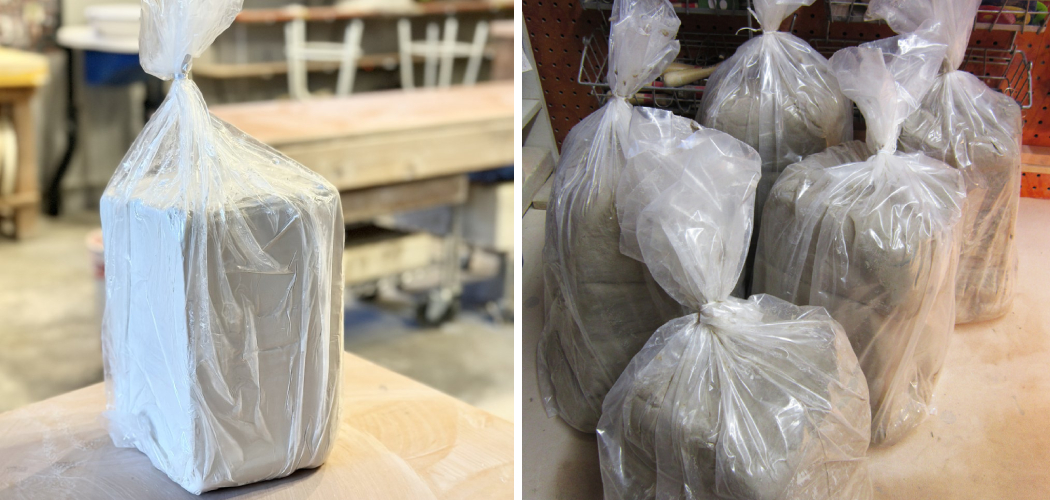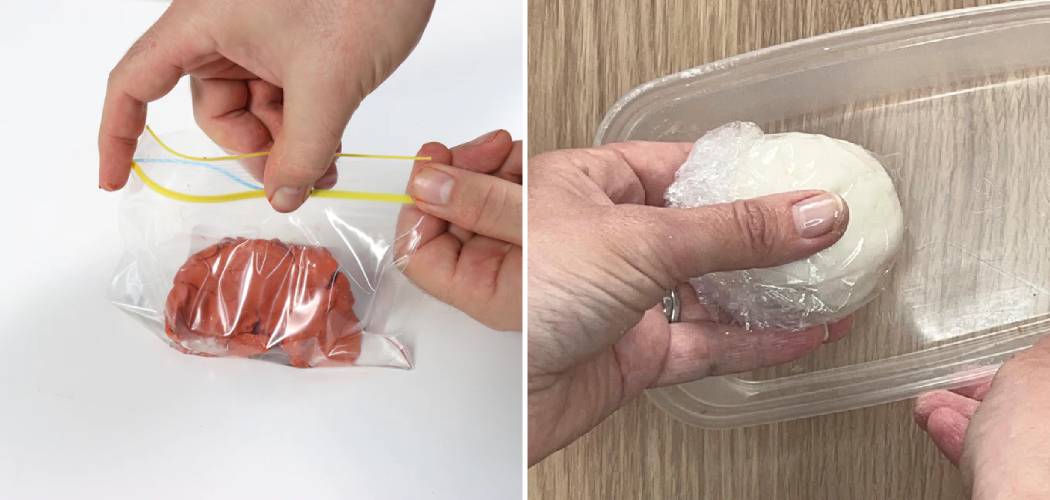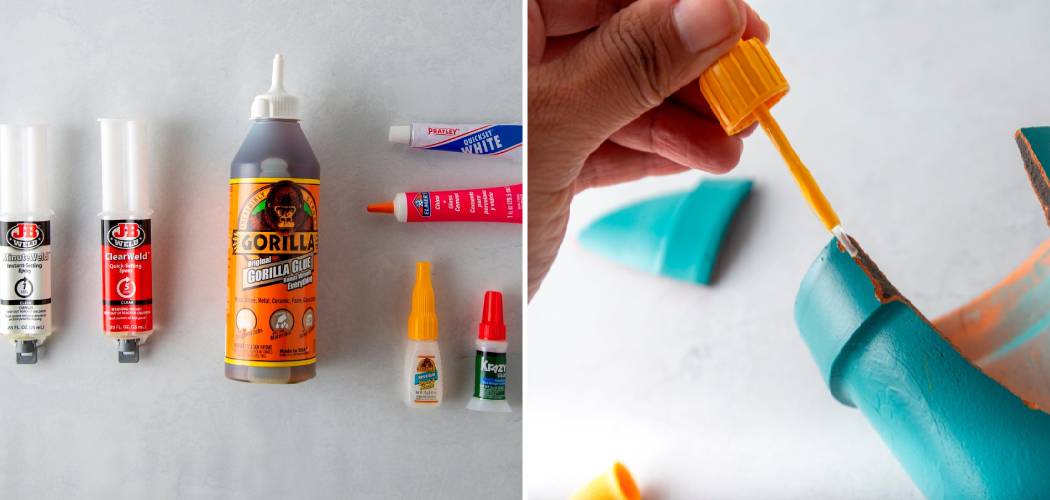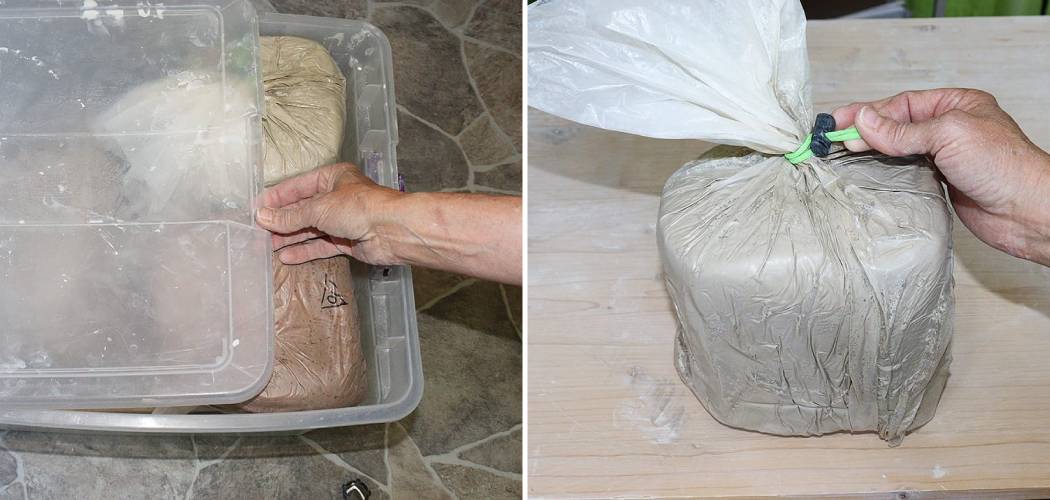Are you a potter or ceramic artist looking for tips on the best way to store pottery clay? Clay storage is essential whether you are just starting out or have many years of experience working with pottery.
The longer your clay stays fresh and pliable, the better — ensuring that each piece you make will come out exactly as planned. In this post, we’ll discuss several methods for how to store pottery clay so that it remains usable for future projects.
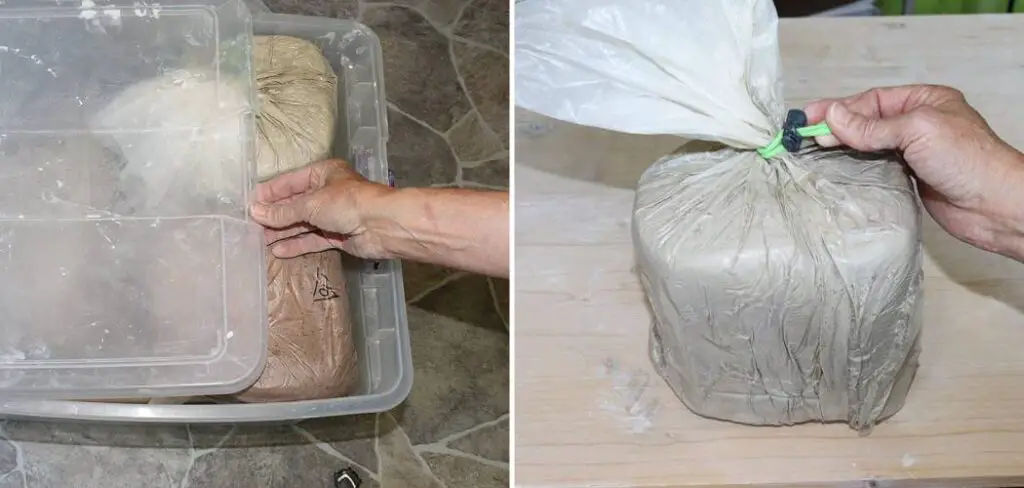
Clay can dry out quickly if not stored properly, leaving you unable to complete your project. Luckily, storing pottery clay doesn’t have to be difficult – just follow these simple steps outlined in this article to ensure that your high-quality clay retains maximum freshness until its next use!
Store pottery clay in an airtight plastic bag or container to prevent it from drying out. Make sure to keep it away from direct sunlight and extreme temperatures to maintain its moisture and workability.
Table of Contents
Can You Store Pottery Clay in the Fridge?
It is not recommended that you store pottery clay in the fridge or any other cold place. Clay needs to be stored at room temperature, as sudden changes in temperature can cause cracking and warping of the clay which will affect its usability. If left in a cold environment, such as the refrigerator, the moisture content of the clay can also change – the water in the clay will form ice crystals, which can cause the clay to become brittle.
The best storage containers to store pottery clay are made of non-porous materials such as plastic or metal. These types of containers should be airtight and able to keep out moisture and dust. Clay should also be wrapped in plastic before being stored in the container to prevent it from drying out or becoming contaminated. If you are using a plastic bag for storing your pottery clay, make sure to avoid any sharp objects, such as scissors, that could puncture the bag and allow moisture in.
When ready to use your clay again after storage, let it warm up to room temperature before attempting to work with it. This will help keep its shape and texture intact during use.
Pottery clay is an excellent material to work with, but it needs to be stored correctly in order to prevent damage or contamination. Make sure to choose the right container and wrap the clay in plastic before storing it in order to keep it safe and usable when you’re ready to use it again. With proper storage, your clay will remain intact and ready for use whenever you need it.
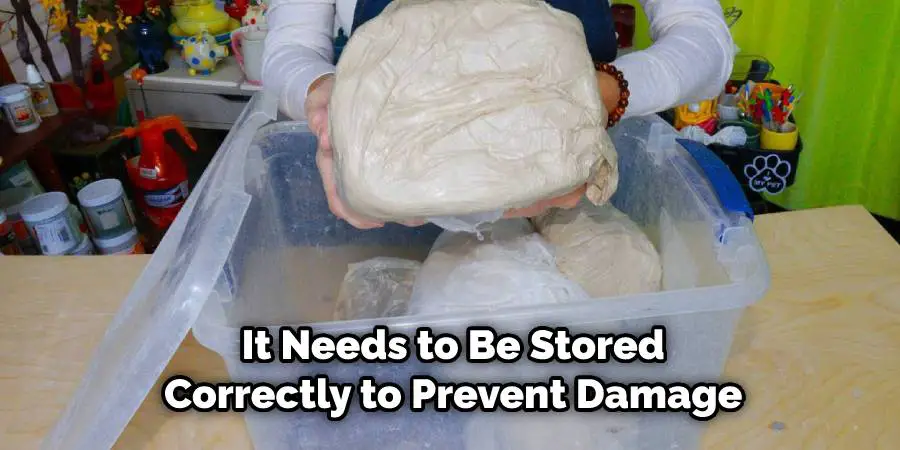
10 Methods How to Store Pottery Clay
1. Store Pottery Clay in a Sealed Plastic Bag:
Keeping the clay in a sealed bag will help maintain its moisture level while keeping it free of dust and other contaminants. This is especially important when storing pottery clay for longer periods of time. If the pottery clay is stored at room temperature, use a thick plastic bag that won’t tear easily as you move it around.
Use an airtight container if the clay is stored in a cool or cold area. Make sure to label the bag with the type of clay and the date it was stored so you don’t forget what type of clay it is when you are ready to use it.
2. Wrap in Wax Paper or Parchment Paper:
Wrapping your pottery clay in wax or parchment paper can help protect it from cracking or drying out too quickly, which is especially important if you plan to work with the same piece multiple times over the course of several days or weeks.
For best results, place a piece of wax or parchment paper over the clay before covering it with plastic wrap. This will create an additional layer of cushioning and protection to help preserve the clay.
3. Place on Damp-Proof Surface:
When working with pottery clay, make sure to place it on a damp-proof surface like a ceramic tile or stoneware plate. This will help keep the clay moist as well as protect it from any splatters and other debris during your creative process.
When not in use, store your pottery clay in an airtight container, such as a zip-lock bag, to help maintain its moisture. Always be sure to close the container tightly so that it’s completely sealed. If stored properly, pottery clay can last for months without drying out.
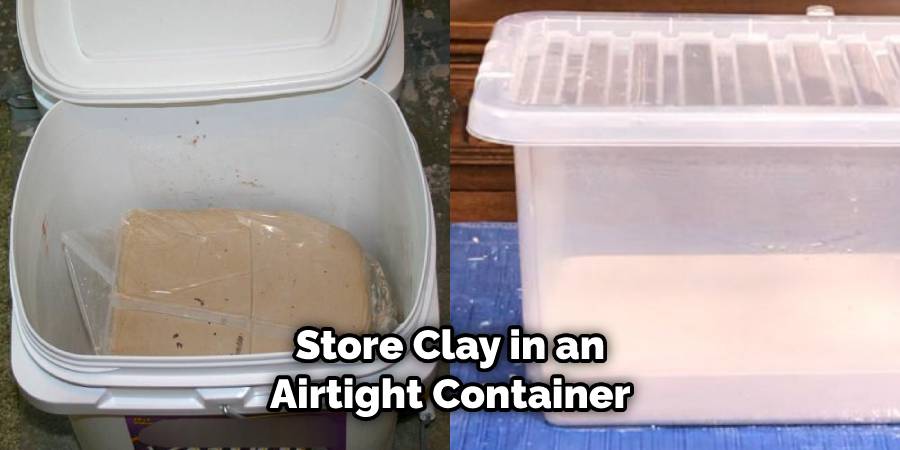
4. Use Plastic Sheeting:
Plastic sheeting can be used to cover your workspace when working with pottery clay, which helps protect your table surface and keeps any extra pieces moist and pliable while you work on them. Be sure to discard the sheeting after you’re done working with the clay so that it doesn’t dry out too quickly while sitting in one spot for too long.
Although plastic sheeting is helpful for keeping your clay moist, it should not be used to store pottery clay. Plastic does not allow the clay to breathe, and as a result, mold can form on the outer surface. It is best to store clay in an open container with a lid or cover, such as a plastic tub or a paper bag.
5. Store in Airtight Container:
Keeping your pottery clay airtight helps avoid any cross-contamination between colors and also prevents dust particles from settling into the moist material and making it unusable over time. An airtight container is also great for storing any finished pieces until you are ready to fire them in a kiln for permanent results. Many potters use food storage containers for their clay, as they can be sealed tightly and will not react with the material.
6. Moisten before Storing:
Before placing your pottery clay into storage, make sure to lightly mist it with water using a spray bottle; this will ensure that any pieces remain malleable until you are ready to use them again without fear of cracking due to dehydration or brittleness from being overly dry.
Additionally, remember to make sure that the container you are storing your pottery clay in is properly sealed; this will protect the clay from collecting too much humidity and potentially drying out the pieces.
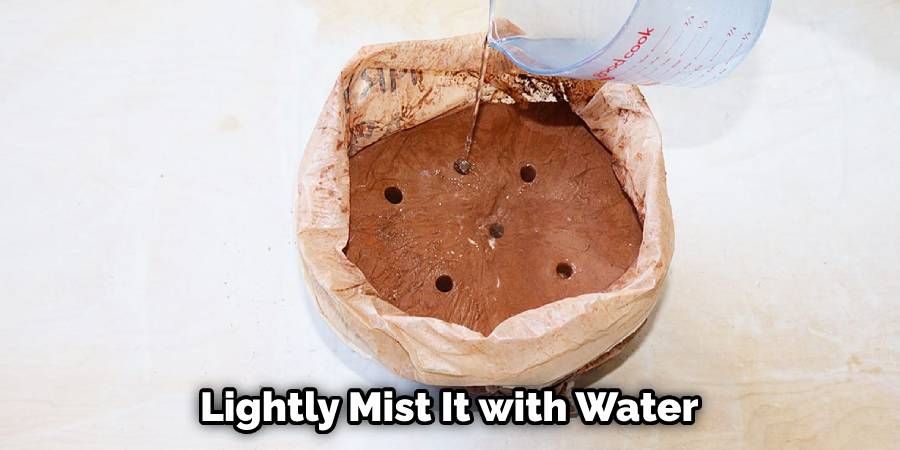
7. Place in Refrigerator:
If you have extra pieces of pottery that need to be stored for long periods of time, consider placing them into an airtight container before putting them into the refrigerator overnight or over extended periods of time (1-2 weeks). This will help keep them moist and ready to use whenever you are ready!
8. Vacuum Pack Your Pieces:
For pieces that need extra protection against drying out over long periods of time, consider vacuum sealing them inside bags specifically designed for vacuum packing food items such as those used by sous vide chefs; this will help maintain their moisture levels while protecting against most contaminants entering the space where they are stored away safely and securely while maintaining their form and flexibility when they are needed again later on down the line!
9. Let Natural Air Flow Circulate :
Allowing natural airflow through your workspace helps ensure there is enough oxygen within the area where your pottery is stored; oxygen helps prevent mold growth – something that is all too common with uncovered workspaces – as well as helps maintain relative humidity levels without having to worry about unnatural environmental conditions such as low temperatures affecting your artwork adversely during storage/transit processes such as during shipping individual items off for display elsewhere!
10. Use Zip Lock Bags :
One last way to store pottery clay involves using zip lock bags; these allow individual pieces (or even entire collections) to stay secured within an enclosed environment while allowing enough airflow circulation within, which can help prevent mold growths and potential disasters prior to firing up your kiln ovens!
Things to Consider When Storing Pottery Clay:
1. Choose an Appropriate Container –
Clay should be stored in a firm and airtight container to eliminate the risk of drying out. It is important to choose a container that is large enough to accommodate the clay, with at least two to three inches of space left on either side for expansion. The container should also be made of solid material, such as plastic or metal, to keep moisture away from the clay.
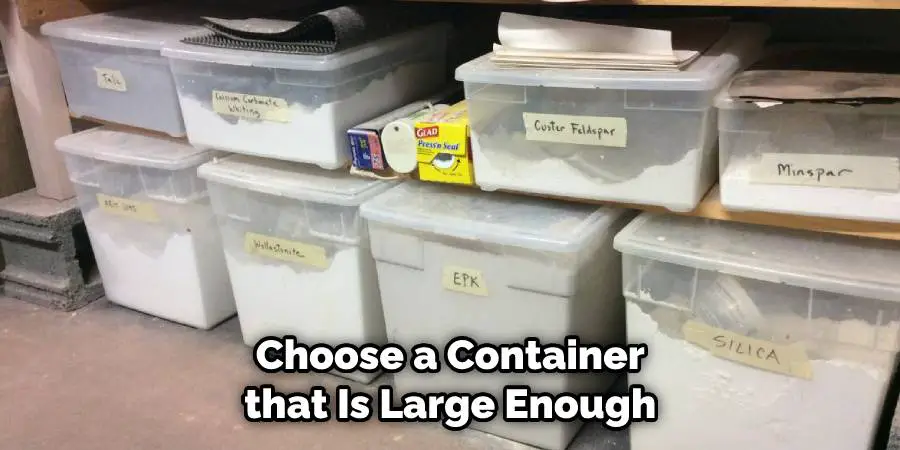
2. Check the Clay Regularly –
It is important to check the condition of stored pottery clay on a regular basis. The clay should feel soft and pliable, and it should have no visible cracks or signs of drying out. If the clay has become dry or cracked, it should be discarded and replaced as soon as possible.
3. Store in a Cool Location –
Clay should be stored in a cool location away from direct sunlight and heat sources. The temperature should remain consistent throughout the year for optimal storage conditions. This can be accomplished by placing the clay in an area of the home or workshop that is away from windows and other heat sources.
Conclusion:
Understanding how to store pottery clay is key to keeping your material fresh and usable for future art-making endeavors. With these tips in mind, you should feel confident working with this versatile will keep you feeling prepared when creating new projects and filling up cardboard boxes with exciting new potteries or sculptures. Happy crafting!
